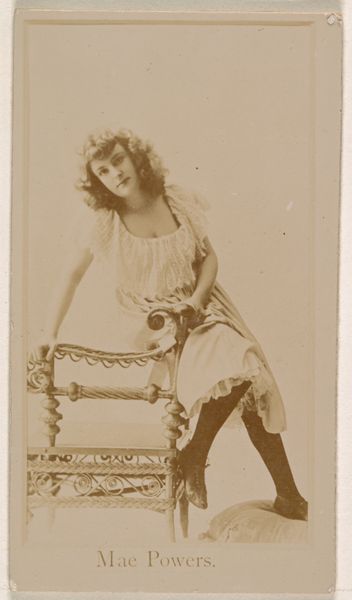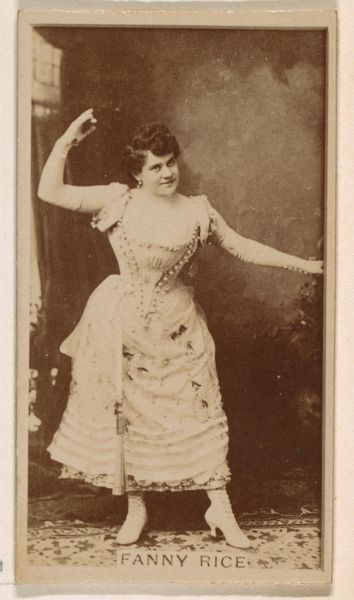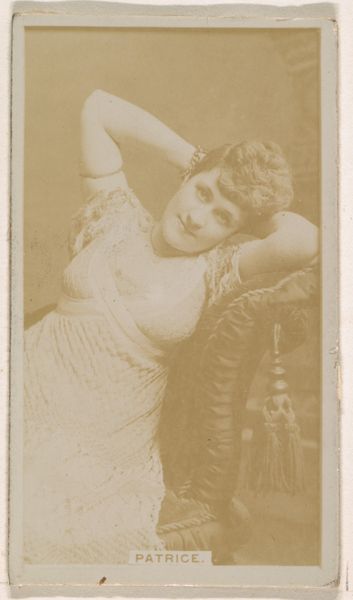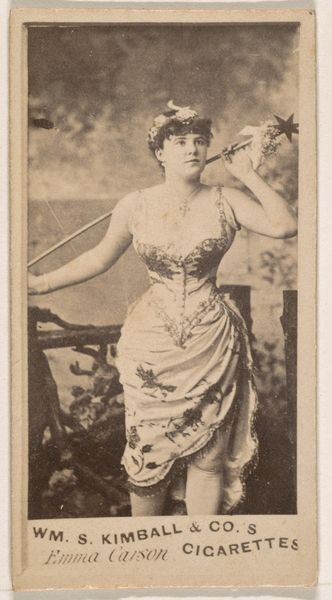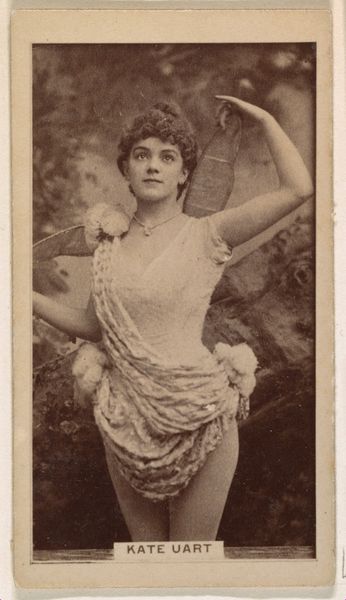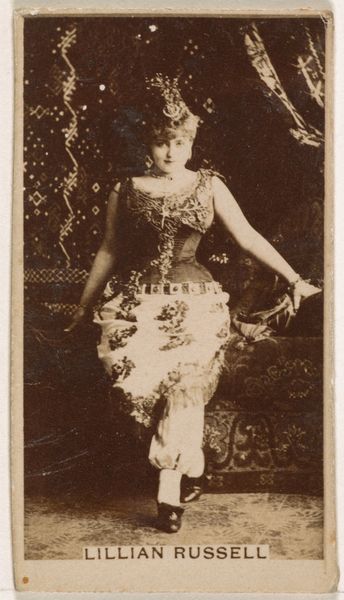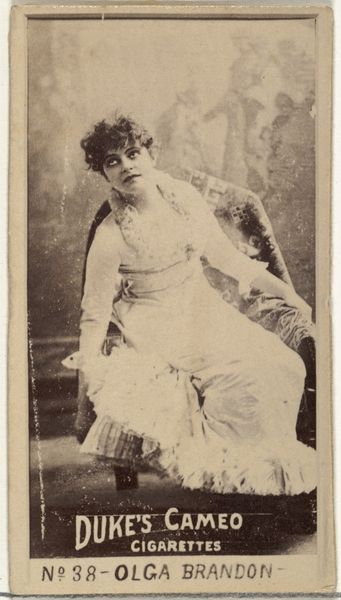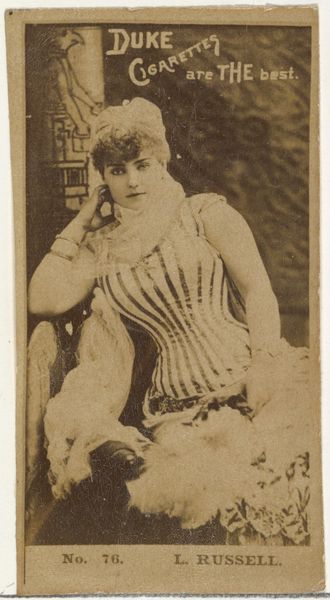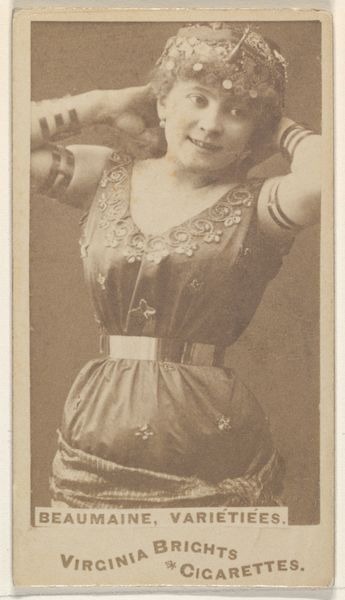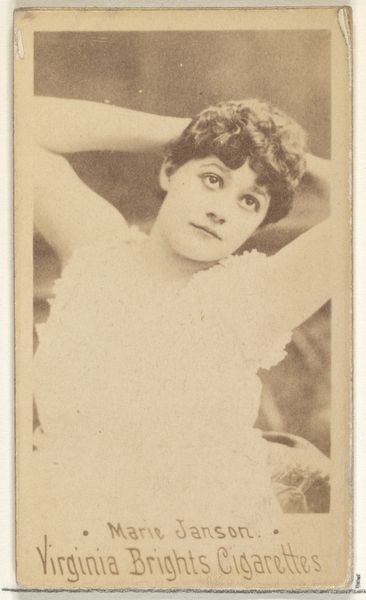
Card Number 59, Olga Brandon, from the Actors and Actresses series (N145-4) issued by Duke Sons & Co. to promote Cameo Cigarettes 1880s
0:00
0:00
drawing, print, photography, albumen-print
#
portrait
#
drawing
# print
#
photography
#
historical photography
#
19th century
#
albumen-print
Dimensions: Sheet: 2 11/16 × 1 3/8 in. (6.8 × 3.5 cm)
Copyright: Public Domain
Curator: Let’s discuss this interesting little artifact from the late 1880s. It’s an albumen print—a photograph essentially—from the Actors and Actresses series (N145-4) issued by Duke Sons & Co. to promote Cameo Cigarettes. It depicts Olga Brandon and it currently resides at the Metropolitan Museum of Art. Editor: Well, it's tiny, isn’t it? Barely bigger than my hand, yet it tries to contain so much. The sepia tone gives it a faded glamour, like a whisper from a bygone era when everything was touched by nicotine. The soft focus and almost smudgy details seem to hint at the tactile process used. Curator: Indeed. These cards were inserted into cigarette packs. This campaign blurred the lines between celebrity culture, consumerism, and Victorian social norms. The rise of mass media helped to create celebrity, making the everyday public crave a small connection to the elite. These cards provided such access. Editor: Access produced through highly exploitative labor of mostly women producing these cigarettes, hand-rolling and packaging the product only to find themselves slowly killed by the very thing that they create. I also can’t help but think about the physical object. Paper meticulously coated with egg whites and silver salts. The hand work it must have taken to mass produce something like this to package inside cigarettes... Curator: A tangible token of glamour disseminated through the smoke of working-class consumption, what a potent image, in that context! It makes us consider the dynamics of class, aspiration, and how these tobacco companies manufactured desire and a sort of status to those that maybe would not be afforded it. It raises ethical concerns regarding the exploitation of labor, particularly during the period when industrial capitalism was gaining influence in American culture. Editor: Exactly! And Olga, there on the card…was she complicit? Or simply another cog in this machine of spectacle? I keep returning to this photo and wonder, in the 1880s what was more highly prized—the cheap fleeting photograph, or the manual labor to create it? Curator: The photograph gained increasing cultural authority during this era, but it was the product of labor that created value in tandem. Duke cigarettes aimed at markets desiring this taste of elite culture. It also seems that a deeper consideration reveals contradictions around that. Thank you for pointing out some very complex realities embedded in a seemingly simple cigarette card. Editor: Thanks, it just feels important to remember what tangible traces still remind us about the real human toll behind what seems like frivolous commodities.
Comments
No comments
Be the first to comment and join the conversation on the ultimate creative platform.
